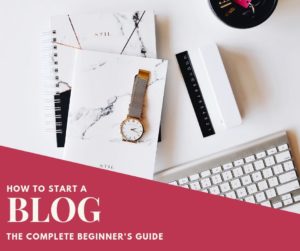The Ultimate Guide to Split Testing – Lead Capture Page Optimisation
I am an affiliate with links to an online retailer in this blog post. When you read what I have written about a particular product and click on that link and buy something from the retailer, I can earn a commission. Please note that I only recommend products that I truly believe in and use in my business. Please read my full disclaimer here
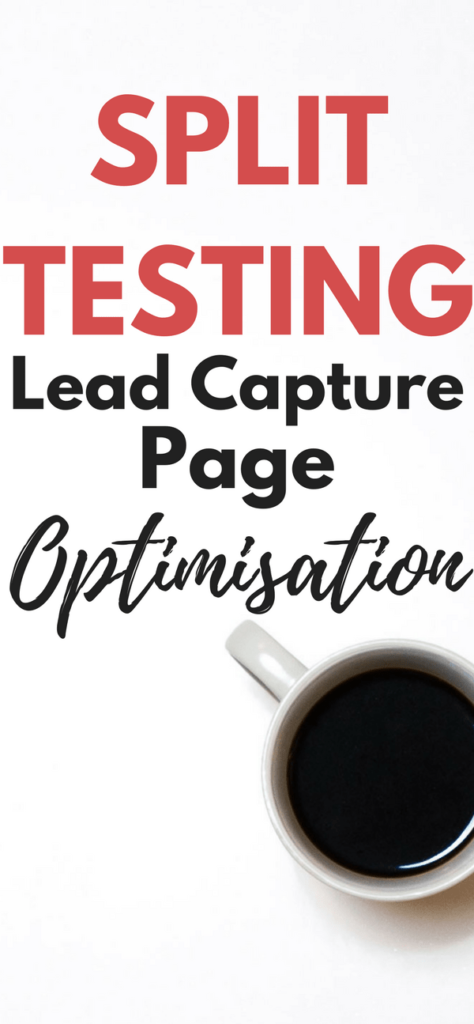 As part of your affiliate marketing campaign you are more than likely to use a landing page or lead capture page to collect email addresses.
As part of your affiliate marketing campaign you are more than likely to use a landing page or lead capture page to collect email addresses.
If you are not already using this tool then I urge you to read my article, Affiliate Marketing For Beginners which is a detailed guide on the right way to do affiliate marketing.
If you are using a lead capture page then to be a successful marketer you should be split testing your pages to improve conversions.
If you are not, then you are leaving a lot of money on the table and this article will teach you how you can get better conversions and stop wasting money if you are using paid traffic.
Here’s What You Will Learn:
- What is split testing and why you should do it
- The anatomy of a lead capture page
- What can you split test on your lead capture page
- Lead capture page split test case study
- Lead capture page best practices
What Is Split Testing And Why You Should Do It
Split testing is testing two or more variables against each other to improve a certain metric. In marketing that metric might be a click through rate, an opt in, a purchase, etc.
The reason why this is important is because if you are running a paid affiliate marketing campaign, split testing allows you to improve your marketing so that you get more conversions for your money.
So for example if you are split testing a landing page or lead capture page and you have sent 100 visitors to landing page A and B, you can see which landing page performs better to give you higher conversions.
So landing page A might give you a 40% opt in rate, whereas landing page B would give you a 70% opt in rate.
What that means is that if you paid $50 for the traffic, 50 visitors go to landing page A and 50 goes to landing page B. With landing page A you were able to get 20 visitors to opt in to see your offer. That means that for landing page A it cost you $1.25 per lead ($25/20 leads).
With landing page B you were able to get 35 visitors to opt in and see your offer. That means that for landing page B it cost you $0.71 per lead ($25/35 leads).
You actually paid less for a lead with landing page B and without split testing you would never have known which variation was more appealing to your visitors thereby improving your conversions and lowering your cost.
Therefore whenever you run an affiliate marketing campaign and you are using lead capture pages, there are ways that you can split test features on the page to improve your chances of lowering your cost and getting more conversions for your money.
The biggest mistake that affiliate marketing beginners make is omitting this important step. You should never ever assume what your audience will like.
If you can, you should try to split test as many features as you can in your marketing and whilst there are many variables that you can test depending on the platform on which you are running traffic, today’s post will focus on lead capture pages.
The Anatomy Of A Lead Capture Page
Let’s dissect the lead capture page.
First of all I want you to understand the difference between a landing page and a lead capture page.
The landing page is the first page a visitor lands on when they click on your URL. So your landing page could be a page to your website or blog. It could be a page to your lead capture page, it can even be a page to a social media account.
A lead capture page, is the page that helps you collect email addresses or leads.
When doing affiliate marketing and if you are promoting a product, I would always recommend that your landing page is a lead capture page.
Never put your landing page as the affiliate sales page. Here’s a few reasons why:
- If a product has a lot of affiliates and they are promoting the same offer without using a lead capture page, it is more than likely that your traffic may have seen the sales page already which may lead to a high bounce rate.
- In most cases, 90% of the time, visitors to a website, who do not know you or the product, are unlikely to purchase the product the first time. When you send a visitor to a sales page but do not collect email addresses through a lead capture page, you are missing out on the opportunity to convert that visitor into a sale and so you can lose money.
- A sales page does not allow you to build your email list. As an affiliate marketer your biggest priority should be to build an email list. Your email list will eventually become your business asset. For my email list, I use the Aweber email autoresponder which stores and follows up with my leads automatically.
- Because you have no control over an affiliate sales page, you may not be able to track any visitors. Some product owners do not allow you to place tracking pixels on the sales page. Without tracking you are running your affiliate campaigns blindly and are more likely to lose money. By using a lead capture page before the sales page this gives you some control over your campaign and you will be able to track your traffic using tracking software like Clickmagick.
Here is what a lead capture page looks like:
Headline
The headline captures your audience’s attention. It tells them what they are about to learn or receive. Make sure that your headline arouses curiosity or creates a perception that what they are about to receive is of a high value.
Here are some examples of lead capture page headlines.
Backlinko
It’s page is simple. It’s straight to the point telling the viewer exactly what they will be getting.
There is a very strong headline here.
This lead capture page is suitable for people who want to learn how to get more traffic using SEO. If you are not getting results from your own tactics then I can see how this lead magnet can encourage people to sign up.
The only thing I would change is adding a bit more detail by telling the visitor where I will get traffic to. Is it to my blog? My website in general? My single page lead capture page? What exactly? Then I can decide if I need his information.
Marketing Sherpa
I think that lead capture page headlines should be bold and inviting. There is nothing on this opt in form that makes me want to hand over my email address because the headline seems mundane.
A headline like Free Case Study Shows You How To Increase Your Sales By 16% Just Like The Global Leadership Summit Did would be more appealing.
With a headline like that I know exactly what I am getting. I am more inclined to provide my email address if the lead capture page speaks to me.
Digital Marketer
The Digital Marketer’s headline is inviting but could be bigger.
For someone who uses Facebook for advertising, getting insider knowledge on the Digital Marketer’s Facebook ads secret would compel me to give up my email address.
I think that a headline should take over 30-40% of a page so that it is eyecatching and immediately clear to the reader.
Sub Headline
The sub headline may break down even further what the lead will get when they opt in. As in Digital Marketer’s lead capture page, you can see that their sub headline is “Copy and paste these 7 proven Facebook ad campaigns to create low cost, high converting ads on demand”.
So not only do I know that I am getting a Facebook Ad Template library. I also know that I can copy and paste 7 proven ad campaigns. I also know that by doing that I can get lower cost ads.
Having a sub headline may or may not create more conversions. This is something that you will need to split test if you decide to use a sub headline along with your headline.
Opt in boxes
Your opt in boxes will include fields for the lead to enter their details such as a name, email address, phone number, etc.
If you are running an affiliate marketing campaign, some affiliates prefer to have a simple opt in page that only asks for an email address. Others prefer a name with an email address if they intend to personalise any emails being sent to the lead.
My preference is to ask for a name and email address but you will only know the effectiveness of what you ask for if you split test it.
You may find that the more information you ask for on your optin form, the lower conversions you get. So if you ask for a phone number, home address or date of birth it is more than likely that your conversions will not be impressive.
Call to action button
The call to action button is used to submit the information that the lead enters so that their email address can be registered in your autoresponder and the lead can receive your lead magnet in their inbox.
There is a psychology behind the use of call to action buttons.
For example, a red call to action button may instigate a different action from an audience than a green call to action button as generally speaking red to some means stop whilst green means go.
The same can be said of the words on a call to action button.
By saying “send me the book” as opposed to “download now”, you may get a different reaction from your audience as by saying “send me the book”, people infer that they are receiving an item by email. “Download now” one can infer that it is an item that is being downloaded onto the user’s computer which some people are not comfortable with.
Just like the other features of a lead capture page it is crucial that you split test this as well.
What Can You Split Test On Your Lead Capture Page
You can split test anything on your lead capture page.
The main goal will be to increase conversions which in your case as an affiliate marketer will be to get more opt ins to your email list.
I would recommend that you split test one variable at a time. Here are the main things you should be split testing on your lead capture page:
- Headlines
- Sub headlines – different text or a lead capture page with or without sub headlines.
- Call to action button color
- Call to action button text
- Background color or image of the lead capture page
- Input fields like name and email address
It is interesting to see what results are like because whilst you may assume that a certain headline works, the results prove otherwise. Which is why you should never let your conscience decide anything in marketing.
Always let the data of split testing decide how you should run your campaign.
Landing Page Split Test Case Study
As a marketer I do many split tests on my lead capture pages to see which one gets a higher conversion.
When doing split testing I am looking for the way a visitor behaves and that behaviour is based on whether they take a desired action such as opting in to get my lead magnet.
My current split test is on my main affiliate offer which is found at the top bar of this website.
If you click on the top bar of this page you will come to a long form or short form landing page that looks like this.
The variable I am testing is between long copy and short copy.
I wanted to see whether people are more likely to provide their email address for further information if they were given some value upfront.
So far it is early stages as I have only gotten 86 unique visits to the pages. I use the Clickmagick tracking tool to help me with tracking visitor behaviour and here are my results so far.
Clickmagick is a really useful tool to help with your marketing so you can know how your pages are performing.
I would strongly recommend this or if you are using LeadPages or Clickfunnels for your lead capture pages, they also have split testing features that you can easily implement.
From my results you can see that the percentage difference between opt ins (ACR) is of little significance.
I will allow this test to run until I have approximately 500 visitors landing on each of the lead capture pages then analyse my results.
Want to see my final results? Subscribe to my newsletter here and I’ll deliver the results with more fantastic tips on how you can get the best out of split testing.
Landing Page Best Practices
What is your reason?
When starting a split test, you should have a reason for conducting one. What do you want to test and why?
Do you want to increase opt ins to your landing page? Then you should be testing your headline, subheadlines, call to action and background of the lead capture page.
Create a sample size
Create a sample size to run your test with. Your sample size is the number of visitors that should visit your page before you can be confident that you have a clear winning lead capture page.
If you send too little visitors then there is a chance that the data will not produce accurate results to help you determine which landing page performed better.
In marketing there is also something called statistical significance. Your lead capture page should reach this level of significance before you can be comfortable with the results. The acceptable level of significance is usually 95% and there are tools that will calculate this for you. Clickmagick is actually one of those tools.
To help you determine your ideal sample size you can use the Optimizely Sample Size calculator.
Create your control and variation
If you are using Clickfunnels or Leadpages you can create two variations of a lead capture page and implement the variables on both to start testing.
So if you are split testing headlines the control lead capture page may say “Free webinar teaches you how to drive an insane amount of traffic to your website at no cost”.
The variable lead capture page may say “Learn the one secret to getting a huge amount of free traffic to your website”.
Most lead capture page software do also have a split testing feature so be sure to look out for them and use them.
Eliminate factors that can affect your test
When split testing be sure to do your test in a controlled environment. For example it is important that you use the same traffic source when running your test. Do not use different traffic sources directed at different lead capture pages as traffic sources are not made equal. So if you are using Facebook Ads for your traffic, use this traffic source for both lead capture pages.
The same goes for your software. Use the same lead capture page software for both lead pages when doing your test.
Make sure that everything works
Before running your traffic make sure that your lead capture page is working. So are the links functioning properly?
Do they load to the correct versions of the page? Are your call to action buttons working and do they generate a lead in your autoresponder?
Do you have proper tracking links and pixels inserted on your lead capture pages? The pixels are available from Clickmagick if you are using this tool to split test.
Clickfunnels and LeadPages also have their own test features that help you understand your results.
Send traffic
Now that everything is working it is time to send traffic to both pages. Ensure that both pages receive an equal amount of traffic so that your results can be accurate.
Wrapping Up
If you want to be a successful affiliate marketer it is so important that you take this additional step to split test your lead capture pages.
A fully optimised lead capture page helps to lower your conversion cost so you may end up spending less money for a conversion and your overall advertising campaign will be cheaper.
If you don’t know how to create a lead capture page most software have detailed on-boarding for their customers and have helpful videos showing them how to do this.
Would you like a detailed walk through of how to create a lead capture page with LeadPages? Leave a comment in the comments section and I just might be able to stir this one up for you.
Cheers,
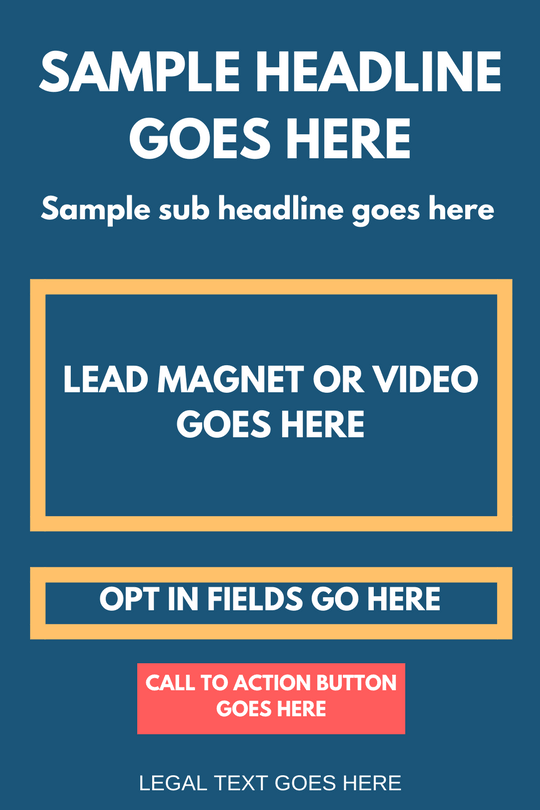
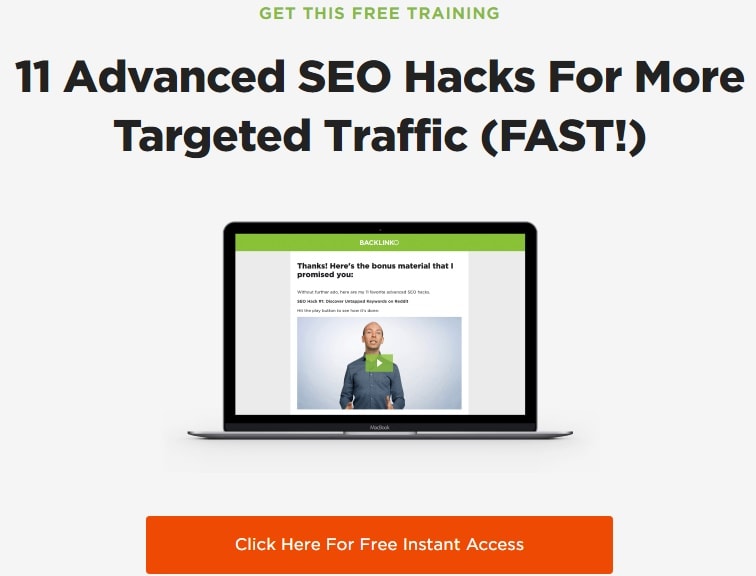

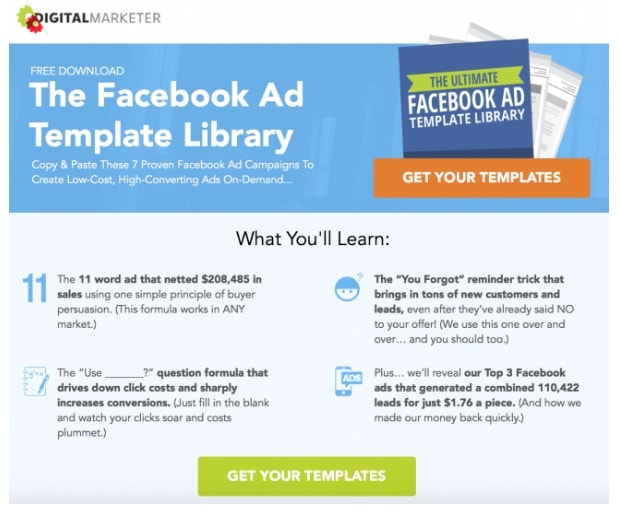
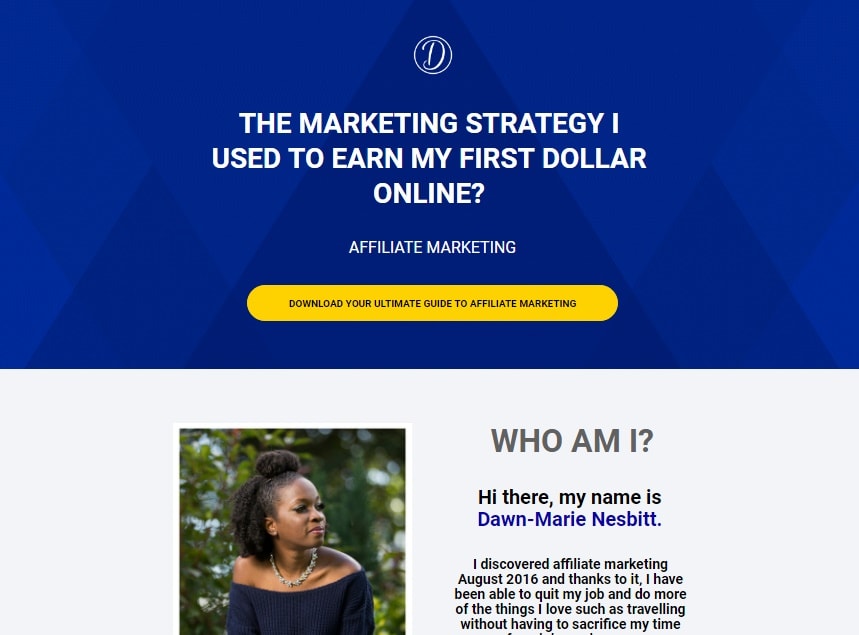



 Previous Post
Previous Post Next Post
Next Post
